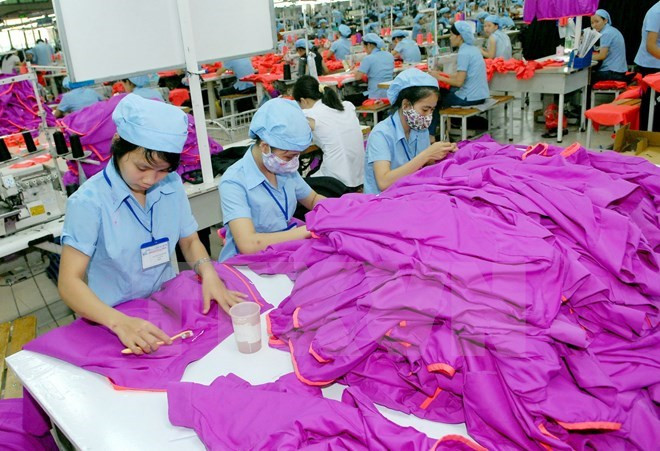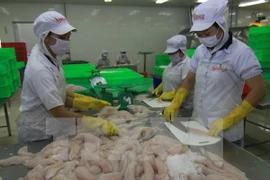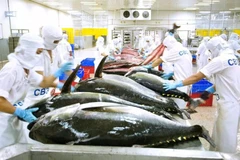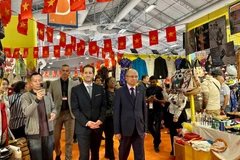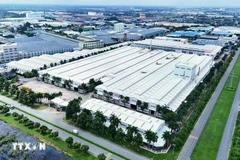HCM City (VNA) - Vietnam's exports will grow by over 10 percent between 2021 and 2030, little changed from the previous five years, according to a recent trade forecast by HSBC.
The report says FDI inflows have been very strong in recent years, helping the country diversify its export base and gradually move into higher value sectors, most notably ICT equipment, which now accounts for around 25 percent of its exports, up from less than 10 percent five years ago.
But at the same time, the large, young, and increasingly skilled workforce continues to attract manufacturers of low-cost items such as clothing and apparel to Vietnam.
Rapid liberalisation should greatly benefit Vietnam's trade with the rest of Asia, the US, and Europe, and underpin expansion into new markets.
Vietnam is one of the 12 countries in the Trans-Pacific Partnership (TPP), which reached a preliminary agreement in October. In August, Vietnam also reached an agreement in principle for a free trade agreement with the EU. It is also speeding up preparation for the launch of the ASEAN Economic Community (AEC) on December 31, 2015.
ICT equipment is forecast to contribute 19 percent of the total increase in exports between 2021 and 2030, up from 14 percent in 2015-20.
Samsung, which first opened a mobile phone plant in Vietnam in 2009, has led this increase. Its first plant doubled its output each year, while another factory was built in 2013 and plans were announced for two more factories a year later: a 600 million USD facility to manufacture household appliances and a 3 billion USD smart phone plant.
LG, Microsoft, and Intel also have plans to expand operations in Vietnam.
The large, growing low-cost workforce and the progress towards the TPP agreement and the ASEAN single market mean Vietnam will continue to attract low cost manufacturing firms and maintain its strong position in the textile and garment market.
Clothing and apparel will contribute 19 percent in 2021-30 while textiles and wood products will account for 10 percent.
Vietnam's geographic location between India, China, and Southeast Asia leaves it well-placed to trade with its fast-growing neighbours.
But with Asian trade much weaker this year, one factor that has helped Vietnam outperform the rest of the region has been its strong links with the US. Indeed, the US is Vietnam's largest export partner and this will still be the case in 2030.
The report expects industrial machinery to contribute around a quarter of the increase in imports in 2021-30, little changed from 2015-20.
ICT equipment will account for around 10 percent of the increase in 2021-30 as a result of the strong presence Vietnam has in the global telecom sector and more broadly the gradual technical upgrading of the economy.
According to the World Bank World Development Indicators, by 2014 Vietnam had 12 secure internet servers per million people, up sharply since 2008 and more than China, Indonesia and the Philippines but substantially less than Thailand and Malaysia.
Textiles and wood products and clothing and apparel will account for close to 20 percent of the increase in imports, reflecting both intermediate demand from the domestic sector and final demand from the buoyant consumer market (household incomes in Vietnam are forecast to rise rapidly over the forecast period, though they are expected to remain lower than China).
China is Vietnam's biggest import partner (of the 24 trade partners in the HSBC Trade Forecast) and with imports from China growing by 15 percent in 2021-30, it will remain so in 2030.
The Republic of Korea will continue to be the second largest import partner over the forecast period. Intra-regional trade in Southeast Asia should benefit from the ASEAN bloc forming a single market by the end of the year, and imports from Malaysia, Indonesia, and Singapore are expected to grow by close to 10 percent in 2021-30.
Imports from the Middle East and North Africa will also grow by around 10 percent, largely reflecting the growing commodity needs from the buoyant consumer market and expanding industrial sector.-VNA
